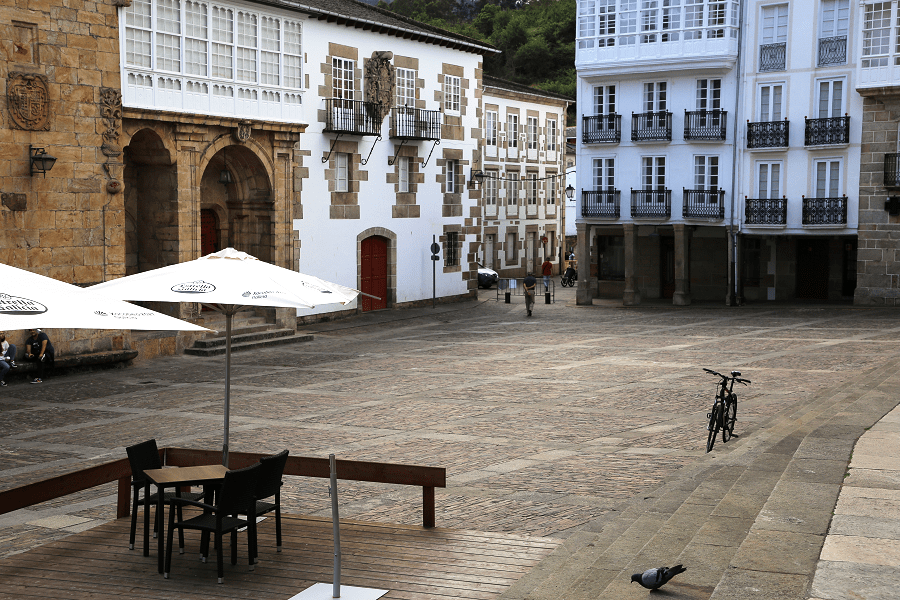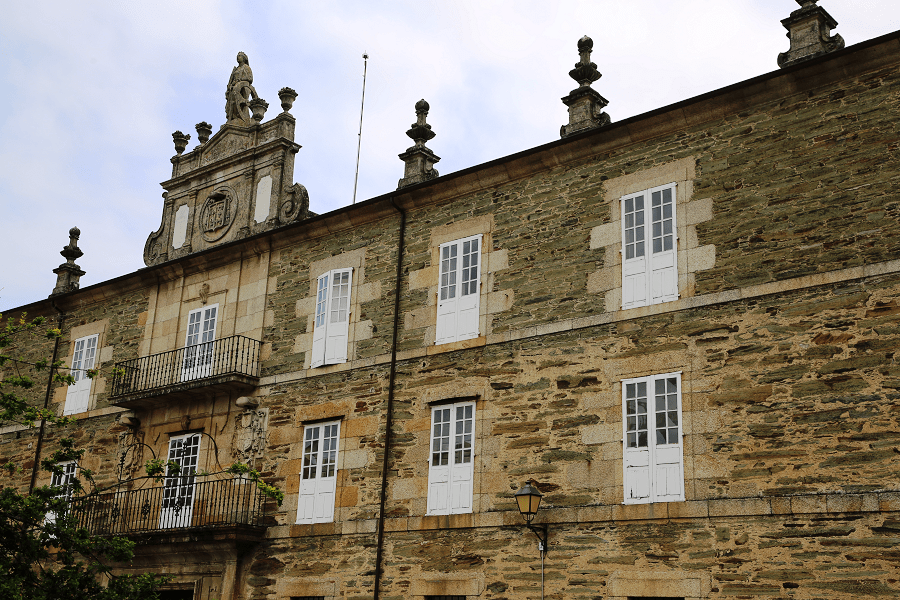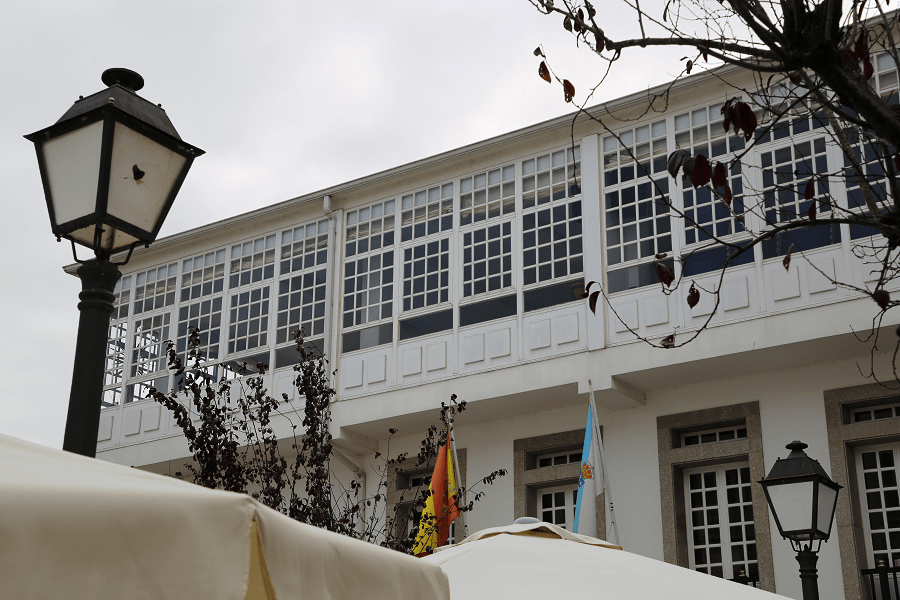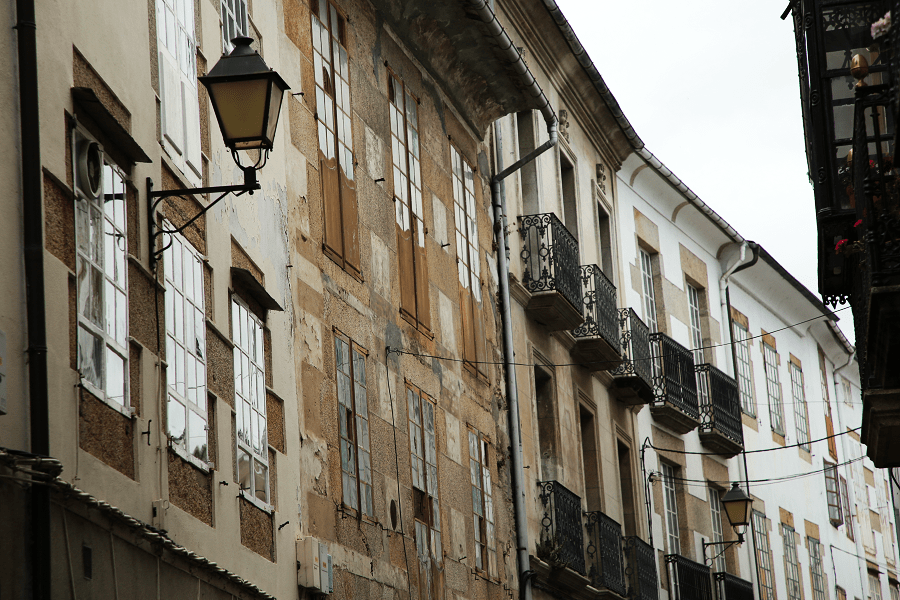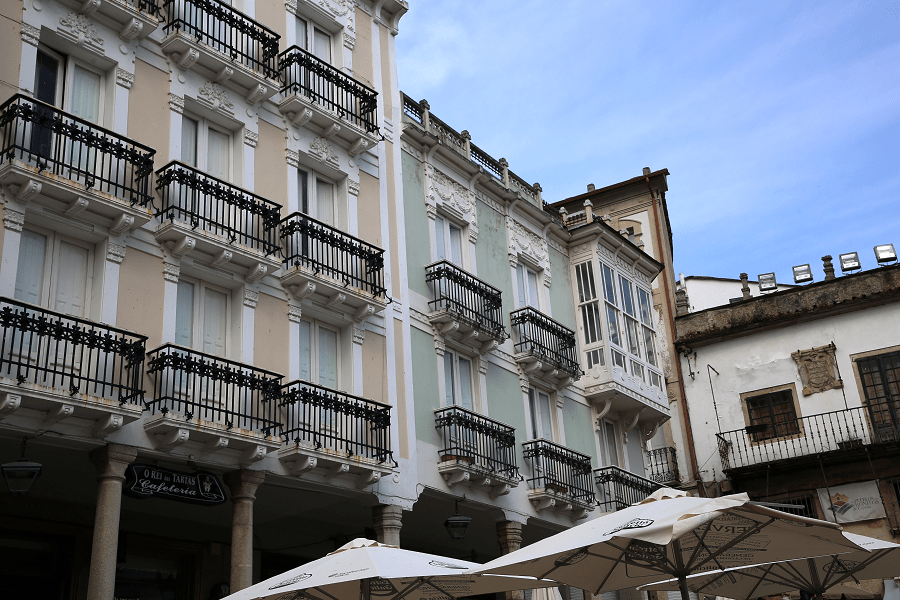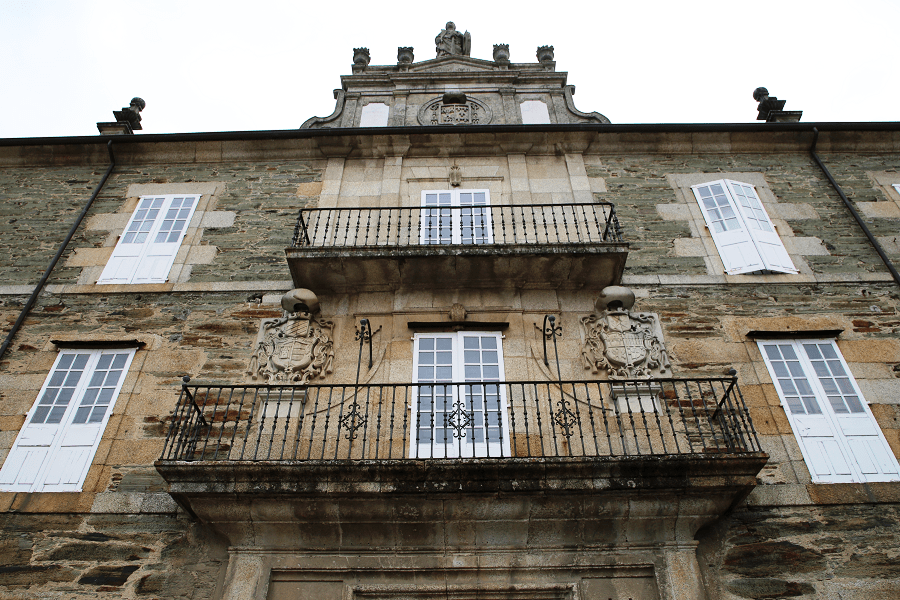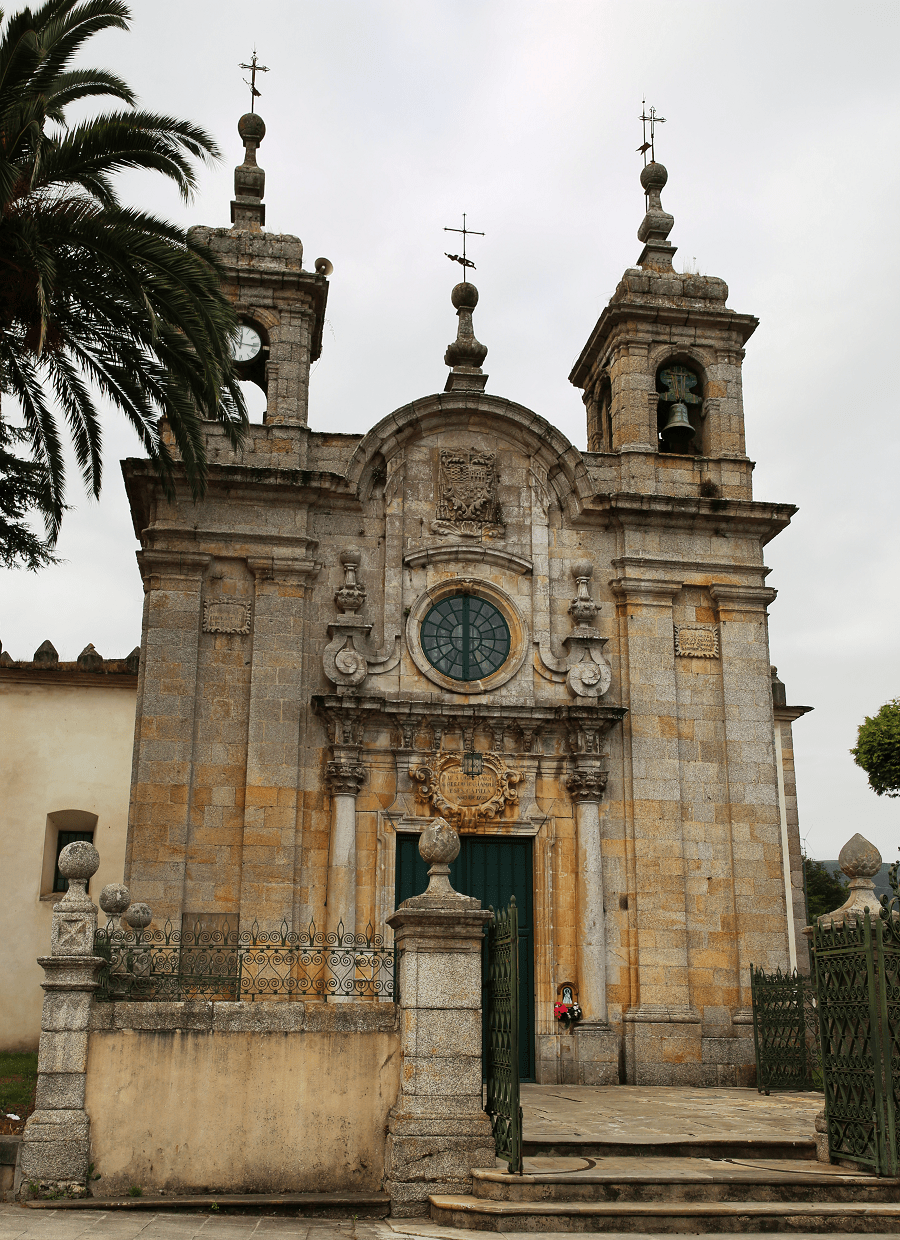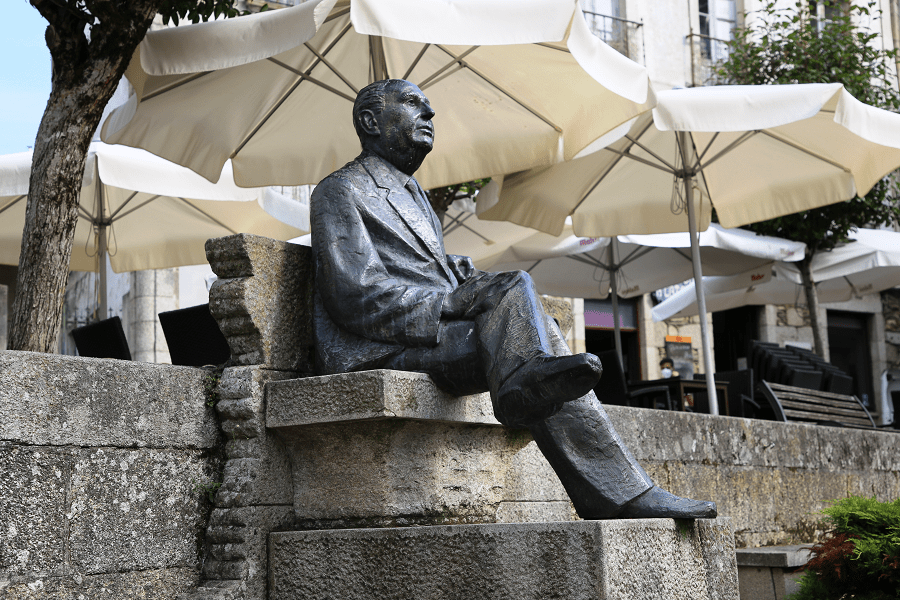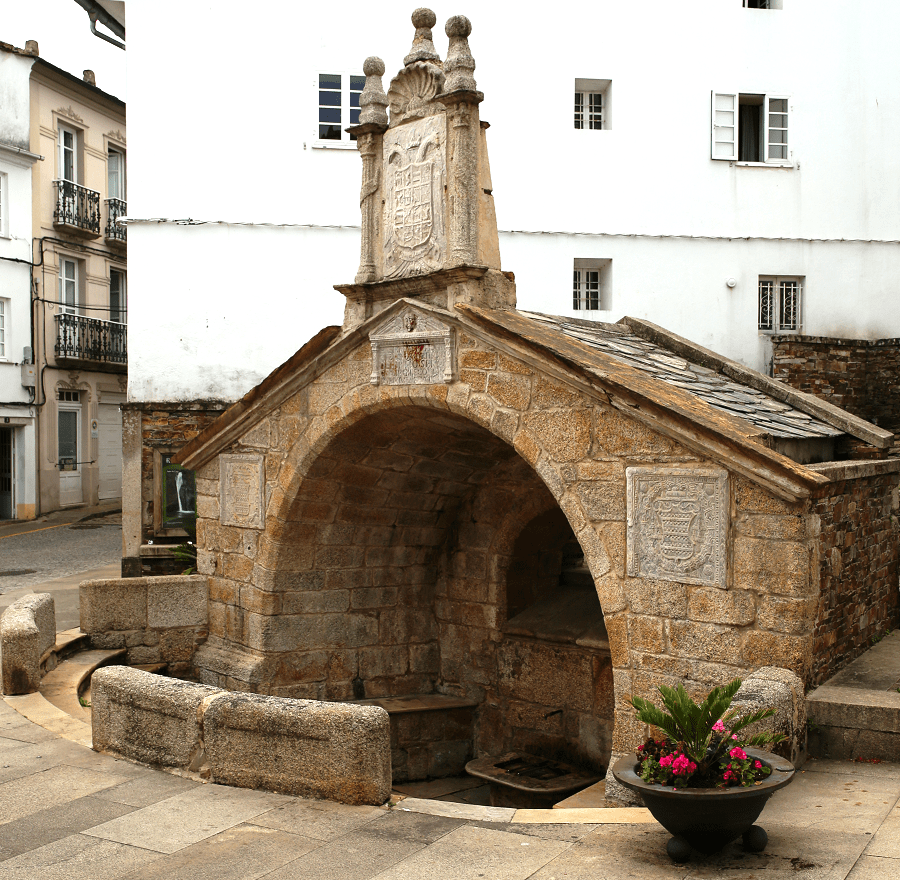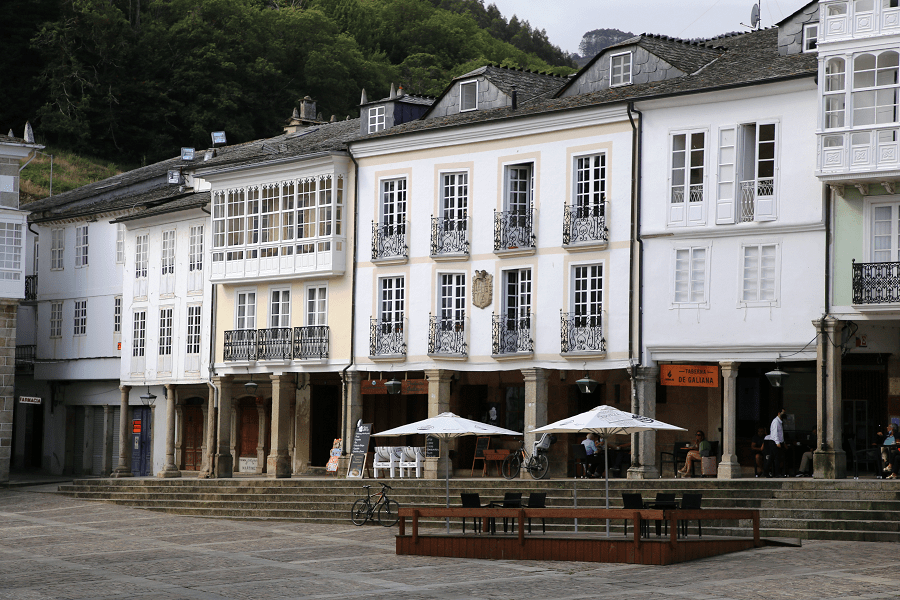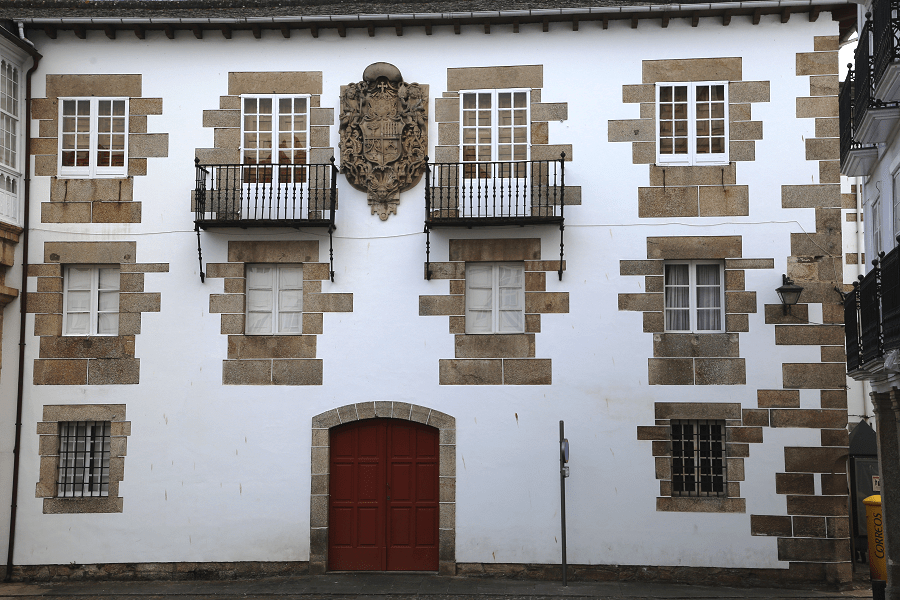Mondoñedo is a city and municipality in the province of Lugo, Galicia, Spain.
The old part of the city, declared a Historic-Artistic Site in 1985, has as its center the Cathedral Square, a national monument built in the 13th century and where all the streets of the town converge, in 2015 UNESCO declared it Patrimony of the Humanity as well as to the North Way of Camino de Santiago that crosses the town.
Other buildings in Mondoñedo include the Santuario de los Remedios, built in the mid-18th century, the Hospital de San Pablo, built at the same time, the Convent of La Concepción, the Church of Santiago, the Monastery of Los Picos and the Real Conciliar Seminary of Santa Catalina from the 18th century.
The architectural landscape of the city is characterized by the flagstone roofs of the houses that end in typical stone peaks called “ameas” to protect against the wind.
The city of Mondoñedo is one of the points through which the Camino de Santiago passes, being a resting place for pilgrims.
Since 2018 the city has been a part of the network “The most beautiful villages of Spain“.
Main attractions
Mondoñedo Cathedral was built by Bishop Martiño between 1230 and 1248 and preserves the original Romanesque door. It has an ogival rose window from the 13th century; the baroque stained glass windows, the towers and the pediment are from the 18th century, ordered by Bishop Munoz y Salcedo.
Inside, the chevet is in the Romanesque style. Below the two eighth-century organs are fourteenth-century wall paintings; some represent the Beheading of the Innocents and the other dinners from the life of Saint Peter.
The “Santos San Cristóbal” cathedral museum, founded in 1969, contains archaeological pieces from the cathedral and neighboring parishes, carvings, paintings, engravings, altarpieces and other liturgical objects. Attached to the Cathedral is the Episcopal Palace, and in front of it the arcades of the beautiful Plaza de España, where the relaxed seated statue of Don Álvaro Cunqueiro is located.
Santiago church is the only church in the historic complex that is “new”, that is why it is popularly known as Igrexa Nova. It was built thanks to Bishop Fernández de Castro who, wanting to give the parish of Santiago its own headquarters and to put an end to the confrontations between the parish priest and the capitulants, decided to build a new building to house it. The works began in 1890, but had to be interrupted due to lack of means. At the beginning of 1900 it was finished and consecrated.
Santuario de los Remedios, at the entrance of the city is the Sanctuary of Nuestra Señora de los Remedios, inside which the most beautiful baroque complex of Mondoñedo is preserved. The Sanctuary is at one end of the Campo de los Remedios, in a place known as Pena de Outeiro, on land purchased in 1558 from the council with donations from a group of people of Mindon. Its plan is of a Latin cross, although its naves covered by barrel vaults seem the same size.
Hospital de San Pablo, also built at the same time. Above the door, the shield of Mondoñedo and Sarmiento himself stand out. It is said that Sarmiento had the “stone disease” due to the many constructions that he promoted and that he wanted to open a channel through the Masma River to bring water from the sea to Mondoñedo.
Alameda de los Remedios, located between the sanctuary of Los Remedios and the hospital of San Pablo, was planted in 1594 by the regidor Luis de Luaces, who celebrated the first Tree Festival in Europe. There is a memorial monolith.
Monastery of La Alcántara, from the 18th century, today abandoned. The right side wing is currently located the pilgrims’ hostel.
Concepción Convent, from the early 18th century, was built to house the Conceptionist nuns who lived in the pazo de San Isidro in the Coto de Otero.
How to get to?
The nearest airport is in A Coruña (LCG).
Other airports:
Asturias airport.
Santiago de Compostela airport.
Distance by car:
From Lugo 59 min (80.6 km) via A-6 and A-8
From Santiago de Compostela 1 hr 39 min (157 km) via AP-9, A-6 and A-8
From Madrid 5 hr 37 min (578 km) via A-6
Main information
Area: 142 km² (municipality)
Coordinates: 43°25′41″N 7°21′46″W
Population: 3539
Languages: Spanish, Galician
Currency: Euro
Visa: Schengen
Time: Central European UTC +1



